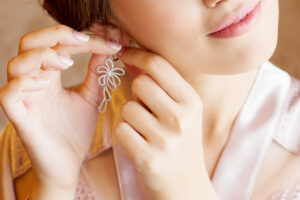
When purchasing a diamond, there are numerous factors to consider, one of which is the inclusions. These defects on a diamond’s surface or inside can have an effect on its look, longevity, and light performance. Although inclusions can be found in almost every diamond, they are not equal. That means that some inclusions should be avoided, but others should not cause you to reject a diamond.
Let’s take a look at what diamond inclusion is.
What Are Diamond Inclusions?
Inclusions are flaws in diamonds that emerge during the production process or during the cutting process. The location of inclusions determines whether they are on the surface or within the structure. Fractures, chips, and scratches are examples of surface inclusions, while etching channels, cavities, feathers, and twinning wisps are examples of interior inclusions.
The size, location, and color of inclusions vary, and the amount of a diamond’s inclusion influences its clarity grade. Diamonds with fewer, less evident inclusions obtain a higher clarity grade, whereas those with numerous dark inclusions noticeable to the human eye get a lower clarity grade. When compared to natural diamonds, lab-grown diamonds have fewer inclusions.
Let’s take a look at the diamond inclusions that you need to avoid.
Chips
Diamond chips are a form of inclusion with a shallow, small aperture on the surface. It usually appears near the edge, culet, or the point where the facets meet. Human error, such as a fall or a collision with a hard surface, is the most common cause. Diamonds that have chip inclusions should be avoided since they are more likely to chip again. The initial chip renders it more vulnerable to future breaks, lowering the diamond’s value and look. Chips can be repaired, but the diamond must be recut.
Dark Crystals

When you look at your diamond rings, you may notice crystal inclusions. They usually develop within the diamond. With crystals, you don’t necessarily have to avoid diamonds. Some are very clear and have no effect on quality, but dark crystals should be avoided. They come in a variety of colors, including red, green, and blue, and they wreak havoc on lighting.
Feathers
A crack or a fracture in a diamond is referred to as feathers. They get their name from the fact that they frequently resemble a feather lodged inside. Feathers might be black or white, and their size and placement in a diamond can vary.
